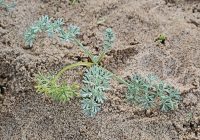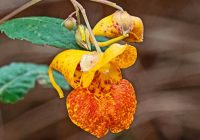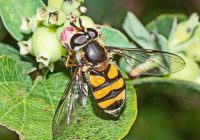Dr Phil Smith’s Wildlife Notes
September 2021
Most of September was unseasonably dry and warm, an early heatwave reaching about 29oC on 8th. The last few days were more typically autumnal with a succession of Atlantic depressions producing intermittent rain and wind. Overall, only seven days had measurable rainfall, the dune water-table falling by 7 cm.
It was another eventful month for nature on the Sefton Coast. One of the main attractions was the amazingly diverse strandline flora that developed on the shore between Ainsdale and Birkdale; I can’t remember seeing anything like it before. The drift-line is usually colonised by a few specialist annuals that can cope with the hostile environment of blowing sand and saltwater; familiar examples are Sea Rocket and Prickly Saltwort. However, alerted by Joyce and David Jarvis, I made several visits to a 500 m stretch north of Ainsdale-on-Sea, where an unprecedented 119 plants were listed. As well as the expected maritime species, there were dozens of ruderals, such as Broad-leaved Dock and Mugwort that are usually found inland on disturbed ground, together with many freshwater specialists like Water-cressand Yellow Iris. Even more surprising was a Cabbage and several Tomato and Sunflower plantswhile, nearer to Birkdale, Joyce and David found a flowering Onion, a plant new to the coast. They also showed me a single specimen of Vervain, a southern species rare in the Northwest. Best of all, I found two young specimens of Sea Wormwood, last seen in the vice-county in 1859!
Another new plant to me and for the Sefton Coast was Orange Balsam, discovered by Peter Gateley on Birkdale Green Beach. I counted 25 plants, several in full flower. They had explosive seed-pods like the more familiar and much larger Himalayan Balsam. A solitary specimen of Dwarf Mallow on Wicks Path at Formby Point was drawn to my attention by Rachael Parks. I hadn’t seen this regionally rare species since 2009.
Although the variety and numbers of insects were lower than usual, there were still some interesting species to be seen. While botanising on Hightown shore, I was delighted to find a small colony of Short-winged Coneheads, the first time this mainly coastal bush-cricket has been recorded at Hightown. Joshua Styles phoned with the news that he had discovered Roesel’s Bush-crickets on waste ground near his Netherley home. This seems to be the first sighting in North Merseyside of this mainly southern insect that is rapidly spreading northwards. It could well turn up on the Sefton Coast within a few years.
I organised an expedition to Marshside with Tim Rogers, Pete Kinsella and Mark Nightingale to look for the rare Sea Aster Colletes bee. Pete had photographed a likely contender a few weeks earlier but we needed a specimen to confirm the identification. This bee is largely restricted to the south and south-east coasts of England but a recent record from south Cumbria suggests it may be colonising our region. Unfortunately, we didn’t find the bee; we were probably a bit too late for it. However, there were other distractions, including numerous Short-winged Coneheads, a Painted Lady and a Wheatear.
One that didn’t get away was a striking Paper Wasp that Pete photographed on Hightown dunes. His excellent photos were circulated and a wasp expert identified it as Pollistes gallicusa southern and central European species that has rarely been recorded in Britain. It was the first for Northwest England. Whether it came off a boat in the docks or arrived under its own steam is not known.
Hoverflies were in short supply but I was lucky enough to come across two of the generally scarce woodland species, Pale-knobbed Didea (Didea fasciata). One was on the Snowberry patch at Falklands Way, Ainsdale; the other I found at the west end of Wick’s Lake, Formby. A very late Dune Robberfly was on bare sand near Devil’s Hole on 26th, the last sunny day of the month.
September saw the usual influx of Pink-footed Geese from Iceland. It’s always a thrill to hear that familiar call again, as on 25th when several skeins flew low over Formby. The same day, there were thousands reported at Marshside.
Shorebirds were also arriving for the winter. There was an impressive high-tide roost at Hightown on 11th with about 1000 Oystercatchers, 250 Redshanks, 250 Curlew and 450 migrating Sandwich Terns. Pete Kinsella and Mark Nightingale’s big telescopes picked out a Curlew Sandpiper, Spotted Redshank and two Mediterranean Gulls. Unfortunately, four people walking along the usually restricted Rifle Range beach flushed the lot. Sadly, this is an increasingly frequent event, as described in the August notes.






